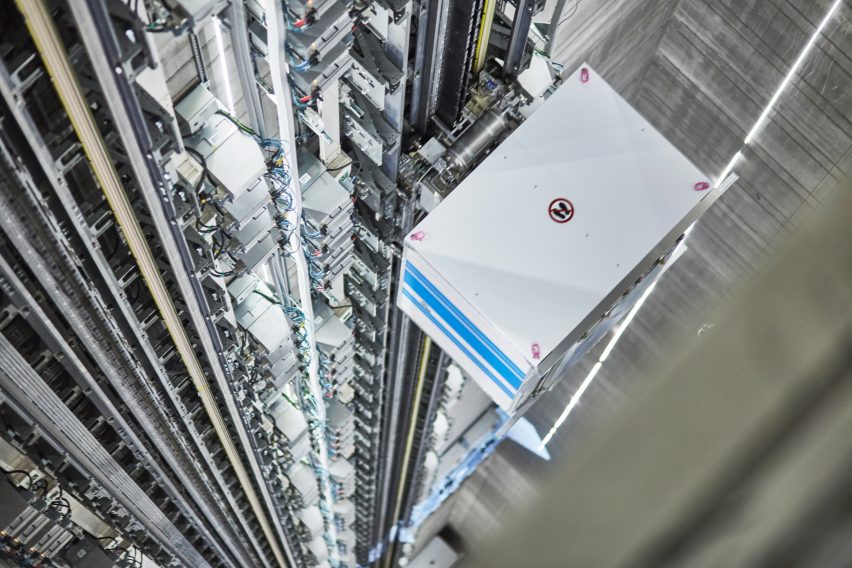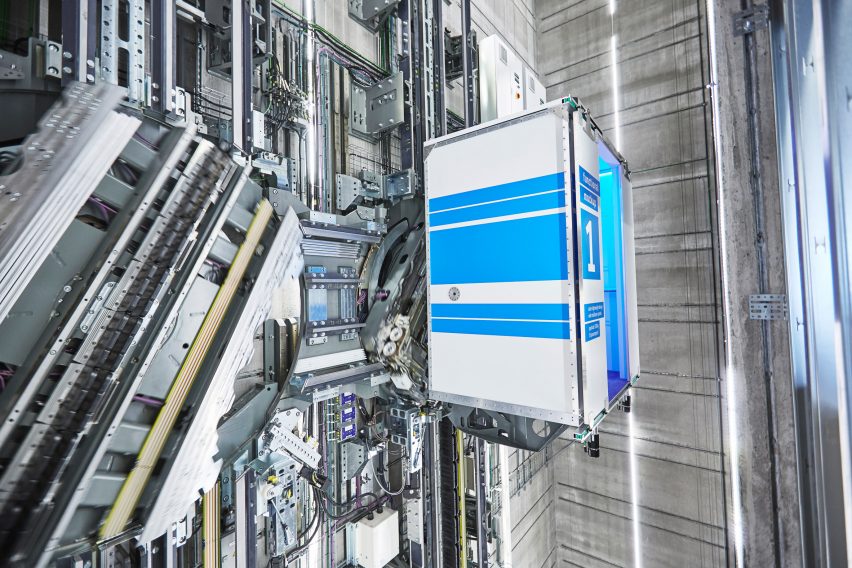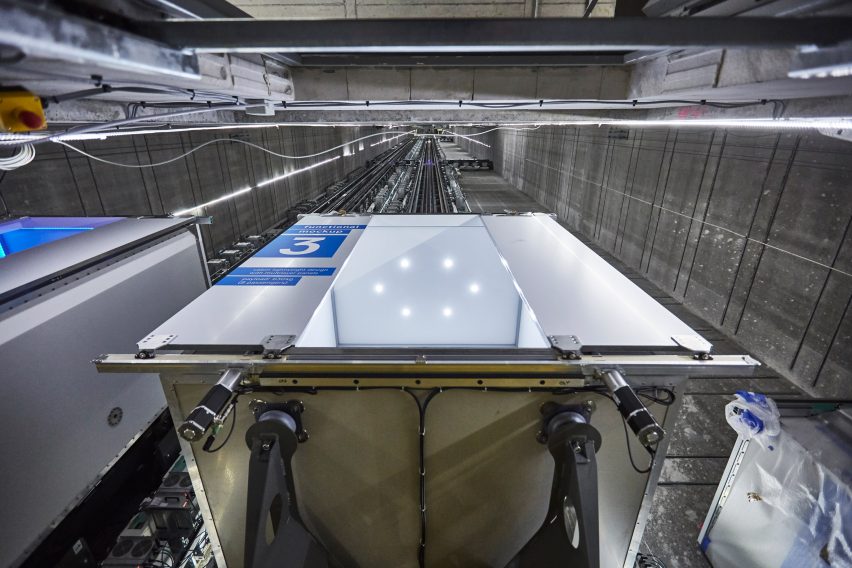ThyssenKrupp unveils the world's first sideways-moving elevator system
The world's first rope-less, horizontal-vertical elevator system – akin to Willy Wonka's glass elevator – has been installed inside a purpose-built innovation test tower in Germany.
Called Multi, the groundbreaking system has been developed by German elevator manufacturer ThyssenKrupp.
Through the use of multiple magnetised cabins, which operate in the same shaft on an electromagnetic track, it makes it possible to travel sideways as well as up and down.

Leveraging the linear motor technology developed for the magnetic levitation Transrapid train, the cabins move up one shaft, travel horizontally, and then come down another in a continuous loop, much like a metro system inside a building.
Exchanger mechanisms like railway switches help to guide the cars, which are mounted with carbon-fibre bearings called slings that allow them to change direction.
Antony Wood, executive director of The Council on Tall Buildings and Urban Habitat has hailed the system as "the biggest development in the elevator industry since the invention of the safety elevator some 165 years ago."
ThyssenKrupp first unveiled its ambitions to build the system back in 2014.
The company now reports that Multi can achieve up to 50 per cent higher transport capacity and reduce peak power demand by as much as 60 per cent when compared to conventional elevator systems.

"These two factors mean a dramatic improvement for high-rise buildings," said the brand in a statement. "Additionally, since Multi can move sideways as well as vertically, and without any height limitations, it enables unprecedented possibilities in the architecture and design of buildings."
Because it runs on magnets and motors, Multi requires fewer and smaller shafts than conventional cable operated elevators. ThyssenKrupp says that the system can increase a building's usable area by up to 25 per cent.
Currently elevator-escalator footprints can occupy up to 40 per cent of a high-rise building's floor space, depending on the building height.
In addition, it requires lower peak power permitting a better management of the building's energy needs.

"We believe Multi is a genuine game-changer that will truly transform the way people move, work and live in our built environment," said ThyssenKrupp's chairman of executive board, Andreas Schierenbeck, at the system's launch.
"It will reduce waiting times for passengers and take up significantly less space within the building. Multi is a key offering that truly represents a landmark revolution in the elevator industry."
The company claims the system is "a genuine game-changer that will truly transform the way people move, work and live in our built environment"
Following the installation of the system across three shafts at ThyssenKrupp's 246-metre-tall test tower in Rottweil, Germany, the German multinational announced that OVG Real Estate would be Multi's first customer.
The European real estate business has outlined plans to install the system in the new East Side Tower building in Berlin, which has been touted as the world's most sustainable office building.
Similarly, Royal College of Art graduate Elena Larriba recently unveiled designs for a pedal-powered, vertical transportation system concept that would allow city dwellers to cycle up the side of buildings, as a space-saving alternative to lifts and stairs.